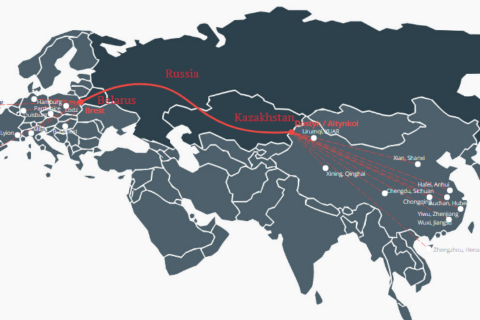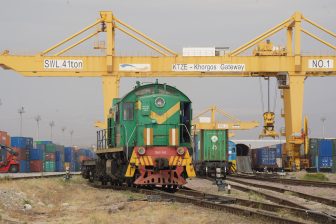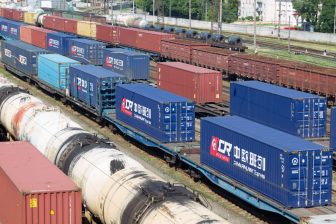
Kaliningrad: a sea link on New Silk Road
Two Memorandums of Strategic Cooperation between JSC United Transport and Logistics Company (UTLC) and Kaliningrad Railway with the ports of Kaliningrad ensure the inclusion of a new sea link on the multimodal cargo route between Europe and China. The agreement enhances the potential of Kaliningrad as an alternative transit region on the important Eurasian freight route.
The memorandums were signed at the International Railway Business Forum held in Vienna last week. UTLC and Kaliningrad Railway (a branche of JSC Russian Railway) are the thriving force behind the development of the alternative line. With the memorandums, they have joined hands with JSC Kaliningrad Sea Trading Port, LLC Baltic Stevedore Company, the LLC Baltic Stevedore Company and the Federal State Unitary Enterprise Rosmorport, each of which will take part in carrying forward freight arriving by rail overseas.
Taking into account the existing railway restrictions at the border with the European Union, multimodal container transportation through the ports of Kaliningrad region is essential in enhancing the potential of the transit route, Aleksei Grom, the President of UTLC explained, hinting at the difference in gauge networks on the European and Chinese railway on the one hand, and the railway network of the Trans-Siberian countries on the other.
Kaliningrad route
The Kaliningrad route avoids the busy border crossing between Poland and Belarus at Brest. Kaliningrad lies between Poland and Lithuania, and re-routes the freight train on a 9,559 kilometer journey through Lithuania to continue on the Trans-Siberian railway through Belarus, Russia, and Kazakhstan.
UTLC is committed to increasing the scope of the route in 2018, which is now fully operational via rail. In October last year, the first train departed from Łódź in Poland to make its way to Chengdu in China, transiting via the Russian exclave of Kaliningrad. A few months later, a transshipment facility was opened in Kaliningrad.
New direction
It is expected that at the first stage of the project up to 365 container trains per year will pass through the terminals of Kaliningrad Railways, suitable for subsequent increase in the frequency of shipments, Grom explained. “Execution of the Memorandums of Cooperation between UTLC and Kaliningrad Railway started a new direction of cargo transportations . Port, sea and railway are getting united to create new products aimed at the development of transit in general”, he commented in reference to the latest development.
Two trains have already been re-loaded at the station of Dzezinsky-Novaya and the first multimodal shipment is expected to be carried out within a month, UTLC said.





